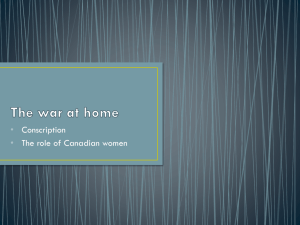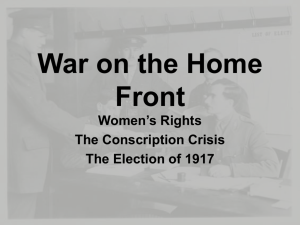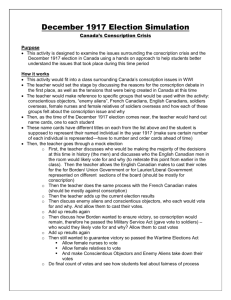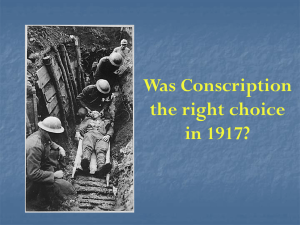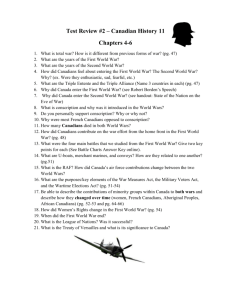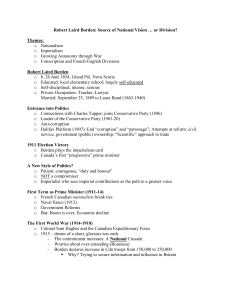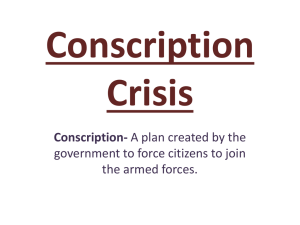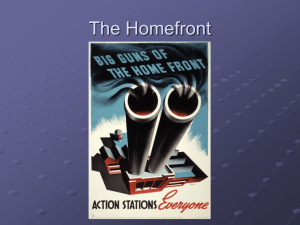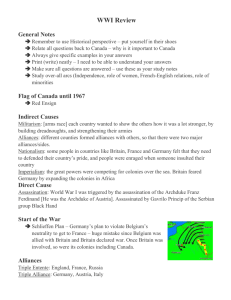Wartime Canada PPT
advertisement
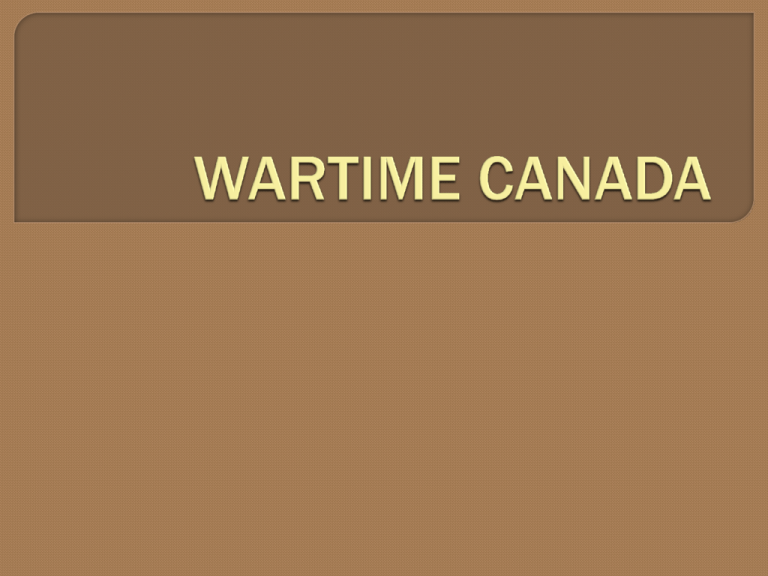
Munitions factories started building ships and airplanes in addition to shells Canadian goods (lumber, copper, wheat) in high demand overseas Led to scarcity within Canada, which led to inflation Allowed federal government more power than ever before Imposed regulations limiting freedom of Canadians Immigrants from Germany and AustroHungarian Empire treated harshly New tech and a large number of troops made WWI very expensive Canadians urged to buy Victory Bonds; could cash them in, with interest, after the war Income tax introduced to help pay country’s debts: 3% from the wealthy, 4% from businesses (too low?) Still not gathering enough money, forced to loan money from other countries (especially USA) More on this tomorrow! Mont Blanc, a French ship transporting 2500 tonnes of dynamite, accidentally collided with another ship Resulting explosion devastated Halifax’s harbour and much of the city 2000-3000 people killed, 10 000+ injured Many thousands of Canadian men killed and seriously injured PM Borden made enlistment compulsory (Military Service Act) • Not enough men voluntarily signing up to fight • Realized Allies needed many more men to win war • Some exemptions: disabled, clergy, those with essential jobs/skills, conscientious objectors Controversial issue which divided Frenchand English-Canadians French saw Military Service Act as forcing them to fight war that they didn’t feel was theirs QC nationalist Henri Bourassa very outspoken about his disagreement Farmers also opposed PM Borden called election over issue Prior to election, passes two new bills to help him win: • Military Voters Act (allowed men and women overseas to vote) • Wartime Elections Act (gave vote to all Canadian women directly related to servicemen) Cancelled vote for conscientious objectors + immigrants from enemy countries Borden invited opposition Liberals in favour of conscription to form wartime Union Government Laurier, Liberal leader, opposed to conscription Union Gov’t won election (with much support from armed forces + related women) Quebec still against 404 000 men called up 380 500 applied for exemptions (medical or otherwise) 130 000 enlisted 25 000 reached France before end of war Overall: 65 000 Battle of the Somme: 24 029 (+ 2000 from Newfoundland) Vimy Ridge: 10 602 casualties (3598 killed, 7004 wounded) Paris Peace Conference is next

